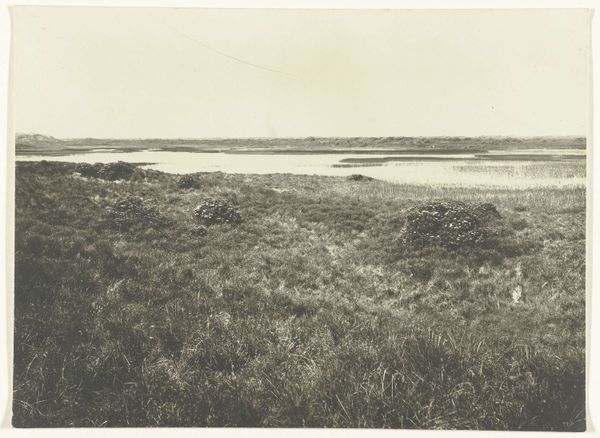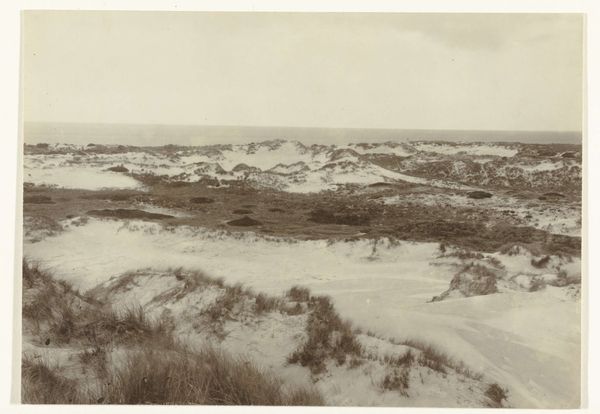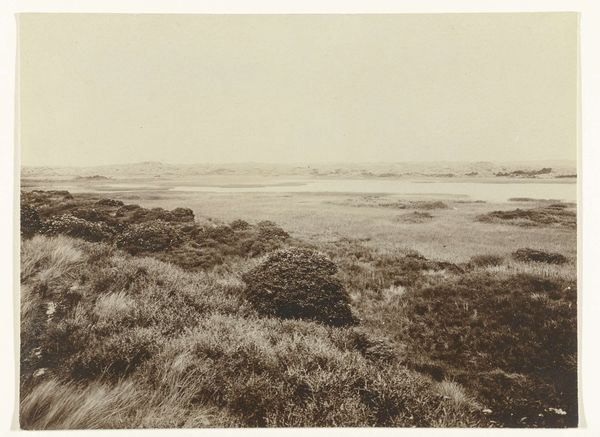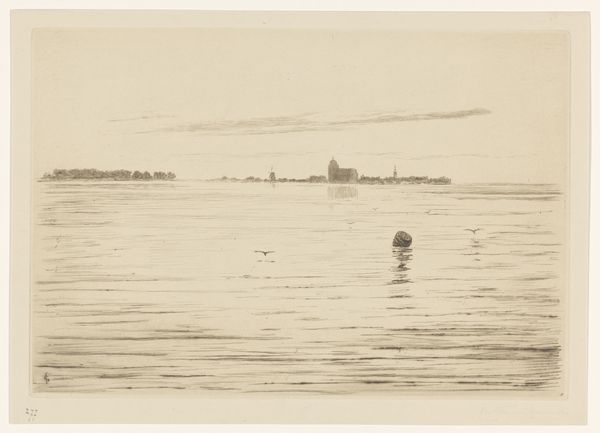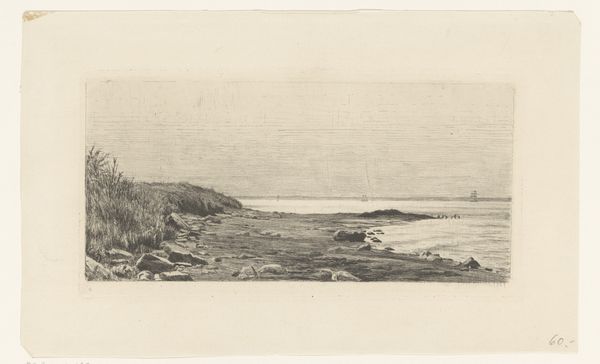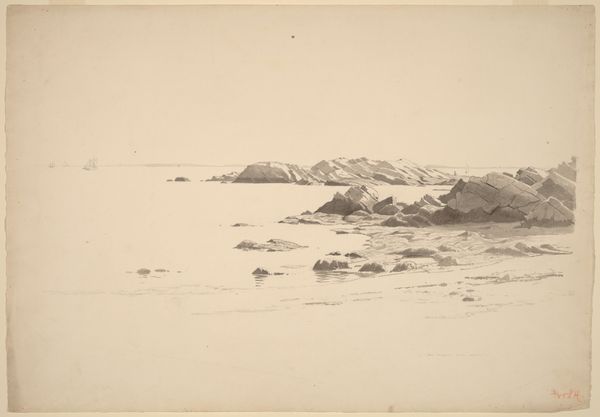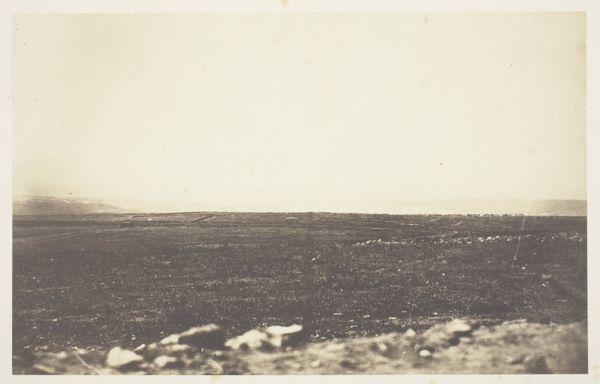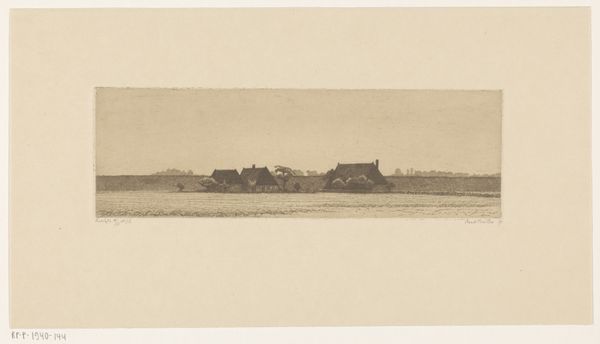
photography
#
pictorialism
#
landscape
#
photography
#
modernism
Dimensions: height 167 mm, width 229 mm
Copyright: Rijks Museum: Open Domain
Richard Tepe made this photograph of Duinlandschap De Slufter, Texel using a camera and photographic paper, although when it was made exactly, we're not sure. What strikes me is the tonal range of the piece and how this affects the way it feels to look at it. The colours are muted, almost monochromatic, giving the piece a sense of timelessness, like a memory fading into the past. It is as though Tepe is exploring the boundaries of what a photograph can capture, not just in terms of representation, but also in terms of emotion. Look at the way the light filters across the sand dunes, creating subtle gradations of tone, from the bright highlights on the crests to the darker shadows in the valleys. It's almost as if Tepe is sculpting the landscape with light, revealing its hidden contours and textures. This reminds me of the American photographer, Alfred Stieglitz, who saw photography as a means of personal expression. Like Stieglitz, Tepe seems to be less interested in capturing a faithful likeness of the landscape, and more in conveying a subjective experience of it.
Comments
No comments
Be the first to comment and join the conversation on the ultimate creative platform.
